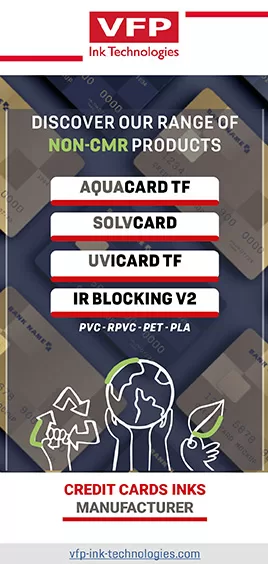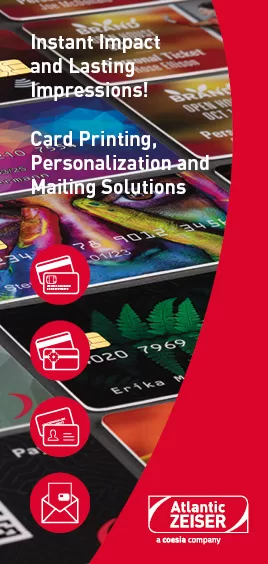
by Jennifer Kohlhepp | CM Magazine Featured
Creativity Afoot in Card Technology Elements
By David Tushie – Magellan Consulting, Inc., ICMA Standards and Technical Representative

One of the most striking trends that I noticed in this year’s Élan Award entrants was the creative attention applied to some of the long-standing
technology elements on transaction cards. Magnetic stripes, signature panels, chip micro-modules and security codes have all had their functional elements enhanced with image branding that increases the overall appeal of their cards. Clearly, card issuers and their card manufacturers are integrating these technology elements as full design features.
Magnetic stripes and signature panels have long had standard colors generic to the media themselves. Some card implementations ventured into colored stripes, as well as a related “cousin” product—the hidden stripe—predominately seen in Japan. These designs employ technology that allows for custom print colors of the magnetic stripe, in either the same or complementary colors of the printed background surface. Or, alternatively, to completely print over the surface of the hidden magnetic stripe without affecting functionality of the stripe itself.
Similarly, both magnetic stripes and signature panels can be enhanced with custom holograms to add brand-enhancing interest to the card. While holograms on magnetic stripes have been seen for some time, their manufacturing was typically limited to high-volume production because the process of producing such tape can be expensive. More recently, lamination plates have been modified to incorporate custom logos and/or text on these stripes that appear holographic when viewed under light. This is a lower cost alternative for the right kind of card applications.
Integrating the chip micro-module into the overall brand and card application has also come into full view. Rather than the conventional six or eight contact plate of rectangular form, these newer chip modules take on the form of their card application. An airline frequent flier card has a chip module in the form of an airplane with fuselage, wings and tail—all compliant with the ISO requirements for size and position of the contacts. The same is true for a soccer club (football club for Europeans and other communities) loyalty and payment card. The chip module is in the form of a soccer ball with ISO-compliant contacts. Both of these examples are clever design enhancements for a long-overlooked technology element of the card.
Long ago, financial transaction card brands implemented card verification values (security codes) that were used to limit “card-not-present” payment fraud. These three- and four-digit codes are printed on the back of the card on or near the right edge of the signature panel (or on the front of an American Express card). The issuer and the cardholder are the only ones with the known code so the assumption is that if the correct code is provided in such a transaction, it must be the cardholder who has the card. However, like magnetic stripe data, such codes are static and don’t change with time or transactions, making them more susceptible to fraud the longer the card is in use. Dynamic security codes are a means to mitigate such susceptibility to fraud. Such a dynamic code, which can change with transactions, periodically with time or both, is a clear advance over static codes that never change over the life of a card. While such devices have been available for several years, their requirement of an on-board battery to power the display of the ever-changing security code makes card manufacturing both more difficult and costly than conventional secure financial cards.
That has changed with a new offering for these dynamic security codes. A complete solution is now available that incorporates the chip set needed, using low power chips and energy harvesting technology along with electronic ink display so that the card does not require an on-board battery. Consequently, this feature can be more readily available to all card manufacturers and their issuer customers.
The trend in making more creative design use of the technology elements on a card is afoot. The examples cited here are only indicative of what can be implemented with the purpose of fully integrating the brand image and messaging desired by an issuer with all elements of card design. I’m looking forward to seeing how this trend proliferates as this becomes a routine part of the card design process.
About the Author: David Tushie, ICMA standards and technical representative, has had a long and continuing career in the card industry, working for international companies such as DataCard, UbiQ and NBS Technologies. He has masters’ degrees in engineering and business, holds U.S. and international patents in measurement and card issuance systems and has had several years of involvement with the ANSI, INCITS and ISO Standards process. ICMA is represented at six ISO and ANSI Standards Meetings through David’s standards role within the association.





